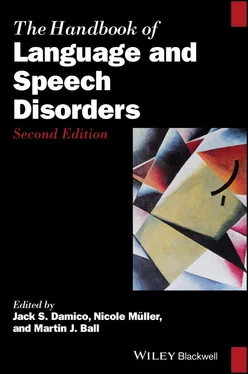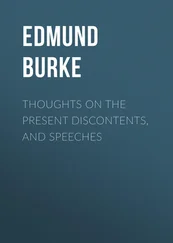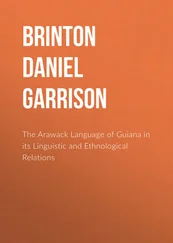52 Ingram, D. (2012). Prologue: Cross‐linguistic and multilingual aspects of speech sound disorders in children. In B. Goldstein & S. McLeod (Eds.), Cross‐linguistic and multilingual aspects of speech sound disorders in children (pp. 3–17). Bristol, UK: Multimedia Matters.
53 Kim, J. (2019). Intercultural communication. In J. S. Damico & M. J. Ball (Eds.), The SAGE encyclopedia of human communication sciences and disorders (pp. 933–936). Thousand Oaks, CA: SAGE Publications.
54 Kohnert, K. (2008). Language disorders in bilingual children and adults. San Diego, CA: Plural.
55 Leirbakk, M. J., Magnus, J. H., Torper, J., & Zeanah, P. (2019). Look to Norway: Serving new families and infants in a multiethnic population. Infant Mental Health Journal, 40, 659–672.
56 López, M., Hofer, K., Bumgarner, E., & Taylor, D. (2017). Developing culturally responsive approaches to serving diverse populations: A resource guide for community‐based organizations. Washington, DC: The National Research Center on Hispanic Children & Families. Retrieved from https://www.hispanicresearchcenter.org/research‐resources/developing‐culturally‐responsive‐approaches‐to‐serving‐diverse‐populations‐a‐resource‐guide‐for‐community‐based‐organizations/
57 Maclagan, L. (2005). Regional and social variation. In M. J. Ball (Ed.), Clinical sociolinguistics (pp. 15–25). Malden, MA: Blackwell.
58 Mahendra, N., Ribera, J., Sevcik, R., Adler, R., Cheng, L.‐R. L., Davis‐McFarland, E., … Villanueva, A. (2004). Why is yogurt good for you? Because it has live cultures. Perspectives on Neurophysiology and Neurogenic Speech and Language Disorders, 13(4), 17–20.
59 Marian, V., & Shook, A. (2012). The cognitive benefits of being bilingual. Cerebrum: The Dana Forum on Brain Science, 2012, 13.
60 McLeod, S. (2007). The international guide to speech acquisition. Clifton Park, NY: Delmar.
61 McLeod, S., & Crowe, K. (2018). Children's consonant acquisition in 27 languages: A cross‐linguistic review. American Journal of Speech‐Language Pathology, 27, 1546–1571.
62 McLeod, S., & Goldstein, B. A. (Eds.) (2012). Multilingual aspects of speech sound disorders in children. Bristol, UK: Multilingual Matters.
63 McLeod, S., & Verdon, S. (2017). Tutorial: Speech assessment for multilingual children who do not speak the same language(s) as the speech‐language pathologist. American Journal of Speech‐Language Pathology, 26, 691–708.
64 McNeilly, L. G. (2007). Cultural and linguistic diversity in language disorders. In A. Ardila & E. Ramos (Eds.), Speech and language disorders in bilinguals (pp. 161–180). New York, NY: Nova Science Publishers.
65 Newport, F. (2019) In U.S., estimate of LGBT population rises to 4.5%. Gallup Statistics. Retrieved from https://news.gallup.com/poll/234863/estimate‐lgbt‐population‐rises.aspx
66 Norbury, C. F., & Sparks, A. (2013). Difference or disorder? Cultural issues in understanding neurodevelopmental disorders. Developmental Psychology, 49(1), 45–58.
67 Oxley, J., Günhanb, E., Kaniamattama, M., & Damico, J. (2017). Multilingual issues in qualitative research. Clinical Linguistics & Phonetics, 31(7–9), 612–630.
68 Pan, C., & Pfeil, B. S. (2003). National minorities in Europe: Handbook (Vol. 1). Vienna, Austria: Braumüller.
69 Paradis, J., Genesee, F., & Crago, M. B. (2011). Dual language development and disorders: A handbook on bilingualism and second language learning. Baltimore, MA: Paul Brookes.
70 Patterson, J. L., & Rodriguez, B. L. (2016). Multilingual perspectives on child language disorders. Bristol, UK: Multilingual Matters.
71 Pickering, M. (2003). Shared territories: An element of culturally sensitive practice. Folia Phoniatrica et Logopaedica, 55(6), 287–292.
72 Reid, B. M., Secord, W. A., & Damico, J. S. (1993). Strategies for the intergration of collaborative theory into practice. National Student Speech Language Hearing Association Journal, 20, 32–42.
73 Robertson, S. A. (2008). Got EQ? Increasing cultural and clinical competence through emotional intelligence. Communication Disorders Quarterly, 29(1), 14–19.
74 Robertson, R., & Scholte, J. A. (Eds.) (2007). Encyclopedia of globalization. New York, NY: Routledge.
75 Roseberry‐McKibbin, C. (2000). “Mirrormirror on the wall”: Reflections of a “third‐culture” American. Communication Disorders Quarterly, 26(3), 178–185.
76 Roseberry‐McKibbin, C., & O’Hanlon, L. (2005). Non‐biased assessment of English language learners. Communication Disorders Quarterly, 22(1), 56–60.
77 Sarbin, T. R. (1997). The poetics of identity. Theory & Psychology, 7(1), 67–82.
78 Scharff Rethfeldt, W. (2019). Speech and language therapy services for multilingual children with migration background: A cross‐sectional survey in Germany. Folia Phoniatrica et Logopaedica, 71, 116–126.
79 Shavelson, R. J., & Bolus, R. (1982). Self concept: The interplay of theory and methods. Journal of Educational Psychology, 74(1), 3.
80 Shaw, E., & Goode, S. (2005). Minibibliography: Early identification of culturally and linguistically diverse children (aged 0–5). Retrieved from https://www.buildinitiative.org/The‐Issues/Diversity‐Equity/Toolkit/Toolkit‐Resource‐List/View‐Toolkit/ArticleId/95/Early‐Identification‐of‐Culturally‐and‐Linguistically‐Diverse‐Children‐Aged‐0‐5
81 Stemberger, J. P., & Bernhardt, B. M. (2019). Phonetic transcription for speech‐language pathology in the 21st century. Folia Phoniatrica et Logopaedica, 24, 1–9.
82 Threats, T. T. (2010). The complexity of social/cultural dimension in communication disorders. Folia Phoniatrica et Logopaedica, 62, 158–165.
83 Tylor, E. B. (1970). The origins of culture. Gloucester, MA: Peter Smith.
84 Verdon, S. (2015). Enhancing practice with culturally and linguistically diverse families. Journal of Clinical Practice in Speech‐Language Pathology, 17(1), 2–6.
85 Verdon, S., Blake, H. L., Hopf, S. C., Pha&c.dotbl;m, B., & McLeod, S. (2016). Cultural and linguistic diversity in speech‐language pathology. International Journal of Speech‐Language Pathology, 18(2), 109–110.
86 Verdon, S., McLeod, S., & McDonald, S. (2014). A geographical analysis of speech‐language pathology services to support multilingual children. International Journal of Speech‐Language Pathology, 16(3), 304–316.
87 Verdon, S., Wong, S., & McLeod, S. (2016). Shared knowledge and mutual respect: Enhancing culturally competent practice through collaboration with families and communities. Child Language Teaching and Therapy, 32(2), 205–221.
88 Westby, C. (2007). Being smart in a diverse world. Communication Disorders Quarterly, 29(1), 7–13.
89 Westby, C., Dezale, J., Fradd, S. H., & Lee, O. (1999). Learning to do science: Influences of culture and language. Communication Disorders Quarterly, 21(1), 50–64.
90 Williams, C. J., & McLeod, S. (2012). Speech‐language pathologists’ assessment and intervention practices with multilingual children. International Journal of Speech‐Language Pathology, 14, 292–305.
91 Williams, A. L., McLeod, S., & McCauley, R. J. (2020). Interventions for speech sound disorders in children (CLI). Baltimore, MA: Paul Brookes.
92 Winter, K. (2001). Numbers of bilingual children in speech and language therapy: Theory and practice of measuring their representation. International Journal of Bilingualism, 5(4), 465–495.
93 Wolfram, W., & Forrest, J. (2019). Dialects and dialectology. In J. S. Damico & M. J. Ball (Eds.), The SAGE encyclopedia of human communication sciences and disorders (pp. 592–597). Thousand Oaks, CA: SAGE Publications.
94 World Health Organization. (2019a). World report on disability. Retrieved from https://www.who.int/disabilities/world_report/2011/report/en
Читать дальше












